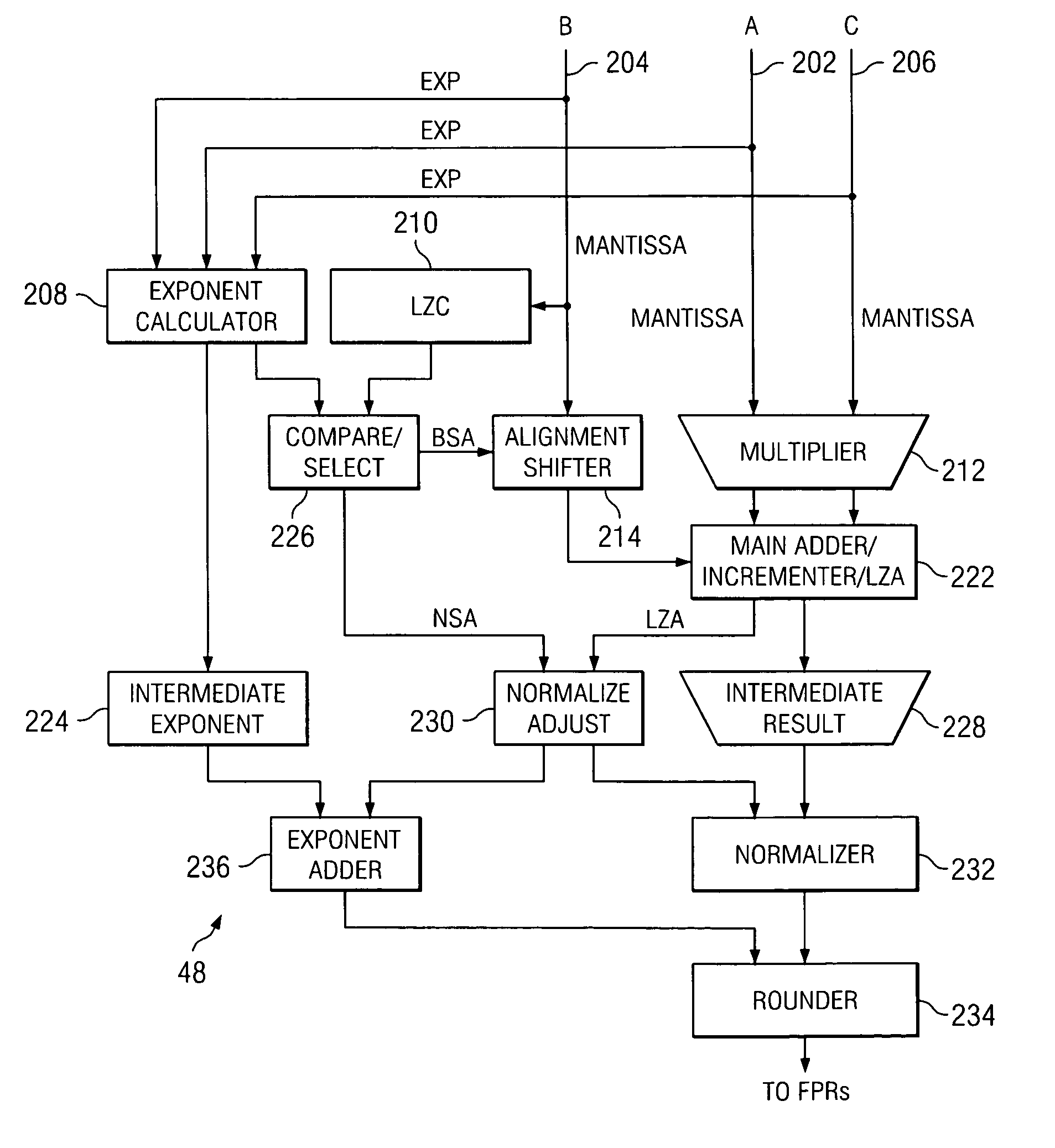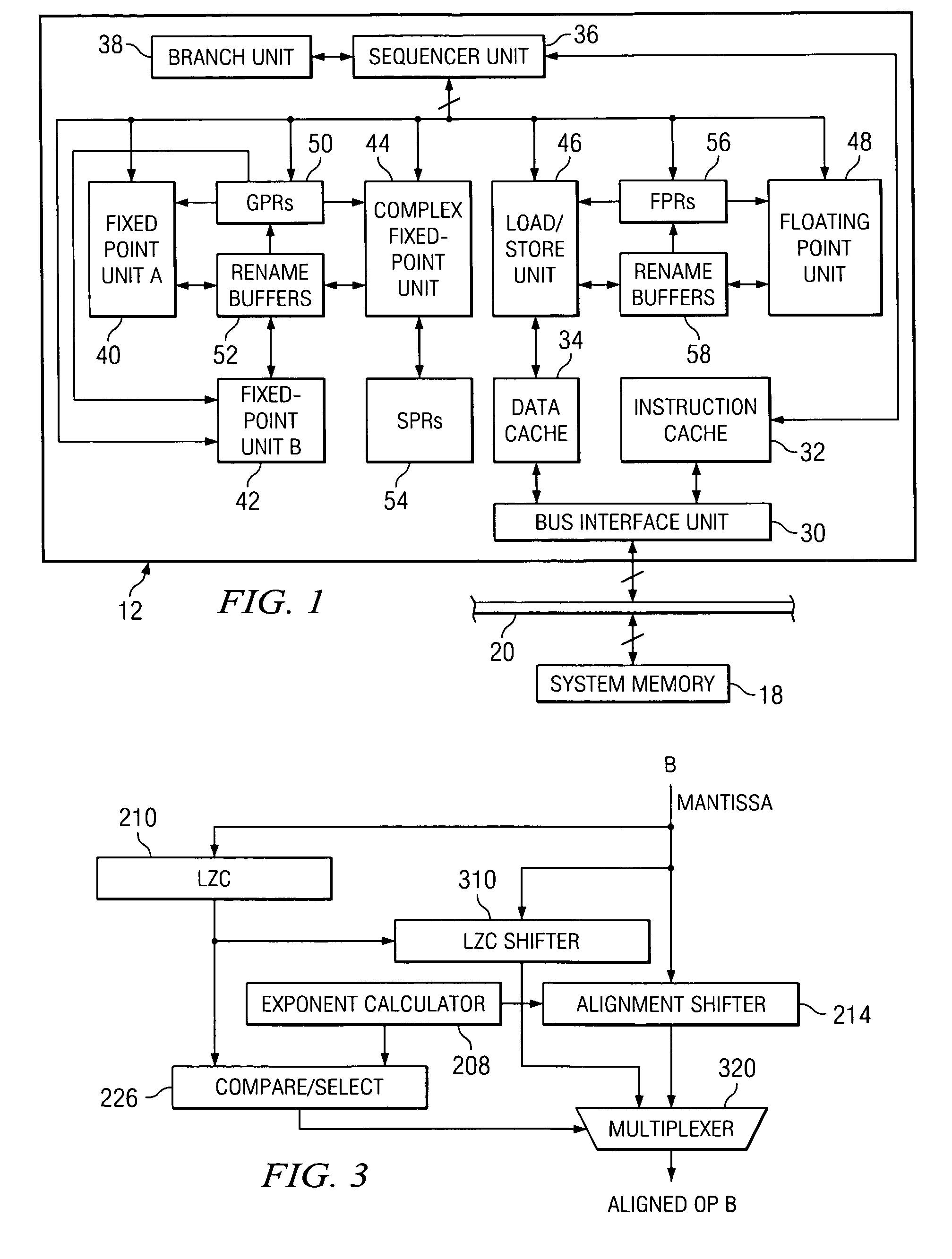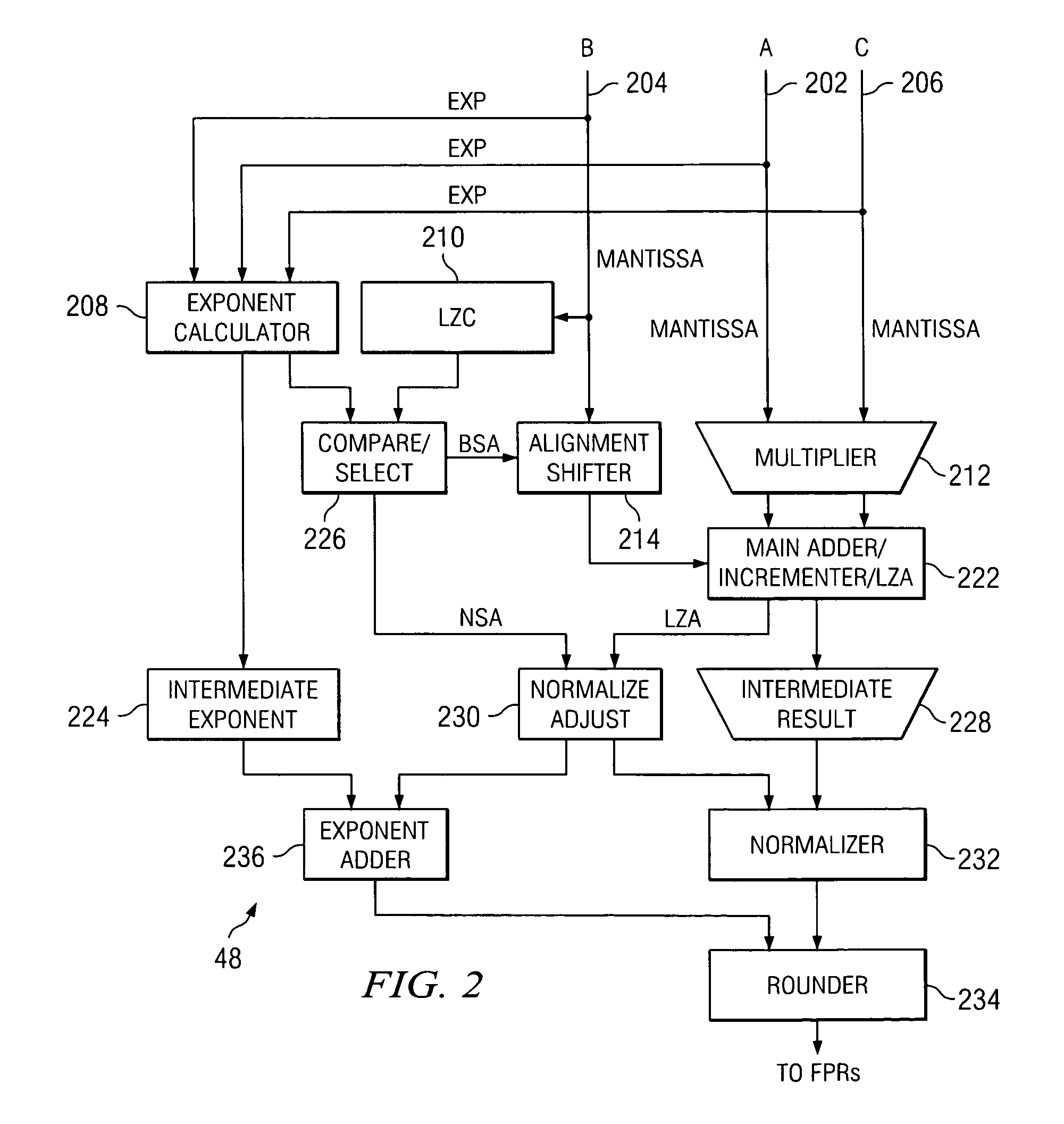System and method for handling denormal floating point operands when result must be normalized
a floating point operand and normalization technology, applied in the field of data processing system and method, can solve the problems of loss of precision, insufficient factor, and number of significant bits, and achieve the effects of simplifying control logic, reducing latency, and reducing power and area
- Summary
- Abstract
- Description
- Claims
- Application Information
AI Technical Summary
Benefits of technology
Problems solved by technology
Method used
Image
Examples
Embodiment Construction
[0026] As mentioned above, the present invention is directed to an improvement in the floating point execution unit, or floating point unit, of a processor so that denormal operands are handled in a more efficient manner, when normalization is required, than in known systems. One exemplary architecture in which the present invention may be implemented is the PowerPC™ microprocessor architecture. FIG. 1 is provided as an illustrative embodiment of a processing unit architecture for a PowerPC™ microprocessor manufactured by International Business Machines Corporation. It should be appreciated that the architecture shown in FIG. 1 is only exemplary and is not intended to state or imply any limitation as to the architectures in which the present invention may be implemented. Many modifications to the architecture shown in FIG. 1 may be made without departing from the spirit and scope of the present invention.
[0027] PowerPC™ microprocessor 12 operates according to reduced instruction se...
PUM
 Login to View More
Login to View More Abstract
Description
Claims
Application Information
 Login to View More
Login to View More - R&D
- Intellectual Property
- Life Sciences
- Materials
- Tech Scout
- Unparalleled Data Quality
- Higher Quality Content
- 60% Fewer Hallucinations
Browse by: Latest US Patents, China's latest patents, Technical Efficacy Thesaurus, Application Domain, Technology Topic, Popular Technical Reports.
© 2025 PatSnap. All rights reserved.Legal|Privacy policy|Modern Slavery Act Transparency Statement|Sitemap|About US| Contact US: help@patsnap.com



